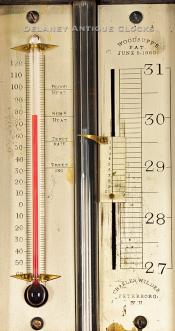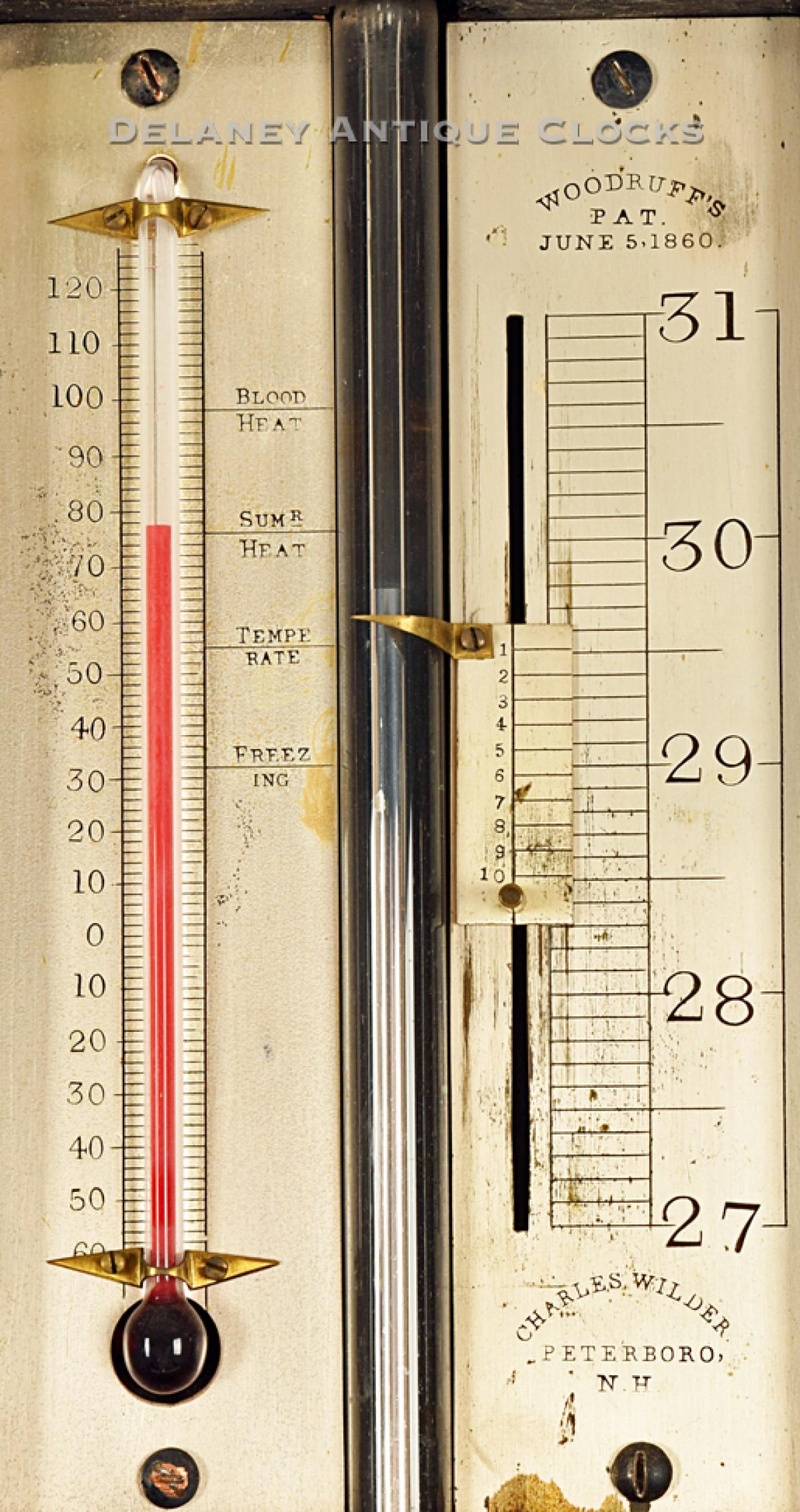Charles Wilder of Peterborough, New Hampshire. An American made stick barometer in tiger mahogany. VV-47.
This stick barometer is American-made. It was made by Charles Wilder of Peterborough, New Hampshire.
This instrument incorporates a straight tube that terminates in a cast-iron cistern. The vernier is manually adjusted. The face plates are brass and retain much of their silver wash. The faceplate on the right is die-stamped at the top, "WOODRUFF'S PAT., JUNE 5, 1860." On the same side, below the numerical scale, it is stamped, "Charles. WILDER / PETERBORO, / N.H." An alcohol thermometer is located on the left side. The faceplate here is die-stamped with BLOOD / HEAT, SUMR / HEAT, TEMPE RATE, and FREEZ / ING. These are the important temperature markers on the thermometer scale, along with their numerical values.
This example is complete, undamaged, and virtually untouched. It was made circa 1865. The case is veneered in mahogany that exhibits a slight ribbon grain pattern.
Overall, this barometer measures approximately 37.25 inches long.
Inventory number VV-47.
Charles Wilder was born the son of Mark and Eliza Ann ( Thayer ) Wilder. He attended the common schools and the Academy in Peterborough, New Hampshire. Charles became a popular teacher at the Academy and later the Principal. He had planned to continue his education and become a lawyer, but his father's debts forced him into the family business of manufacturing shoe pegs. He pursued this business for two years when in 1860, he secured the rights to manufacture portable mercury barometers under a patent issued to Mr. Lum Woodruff of Ann Arbor, Michigan. Lum Woodruff reported weather observations to the Smithsonian Institution. He patented a portable barometer that proved to be extremely popular. Its key feature was a divided cistern. It was constructed so that when the glass tube was full of mercury, the lower portion of the cistern would be as well. As a result, it could be shut off from the now-empty upper section. In the fall of 1861, Charles Wilder converted an old factory in Peterborough into a barometer shop. He began touting the virtues of Woodruff's instrument. He claimed that it was "simple, durable, accurate, perfectly portable, and very cheap" and "a very beautiful and ornamental piece of furniture." It promised farmers a five percent savings on all their crops. For scientific men, it offered "superior accuracy." And for "gentlemen of leisure and cultivation," it offered a "never ending and constantly varying study of interest." All three of Wilder's standard barometer designs had a natural position and use for a thermometer. His scale in Fahrenheit ranged from 0 to 110 degrees. Wilder Barometers were sold throughout the United States by advertising through the leading agricultural periodicals of the day. As a successful businessman and prominent citizen, he was an active member and supporter of his Church. He served as a representative to the state legislature in 1869 and 1870 and was also a town moderator in 1869. He died in 1900. The business continued for a short time until it was sold to the W. & L. E. Gurley Instrument Company of Troy, New York. (Please note that most of this information was provided by the Peterborough, New Hampshire Historical Society.)








